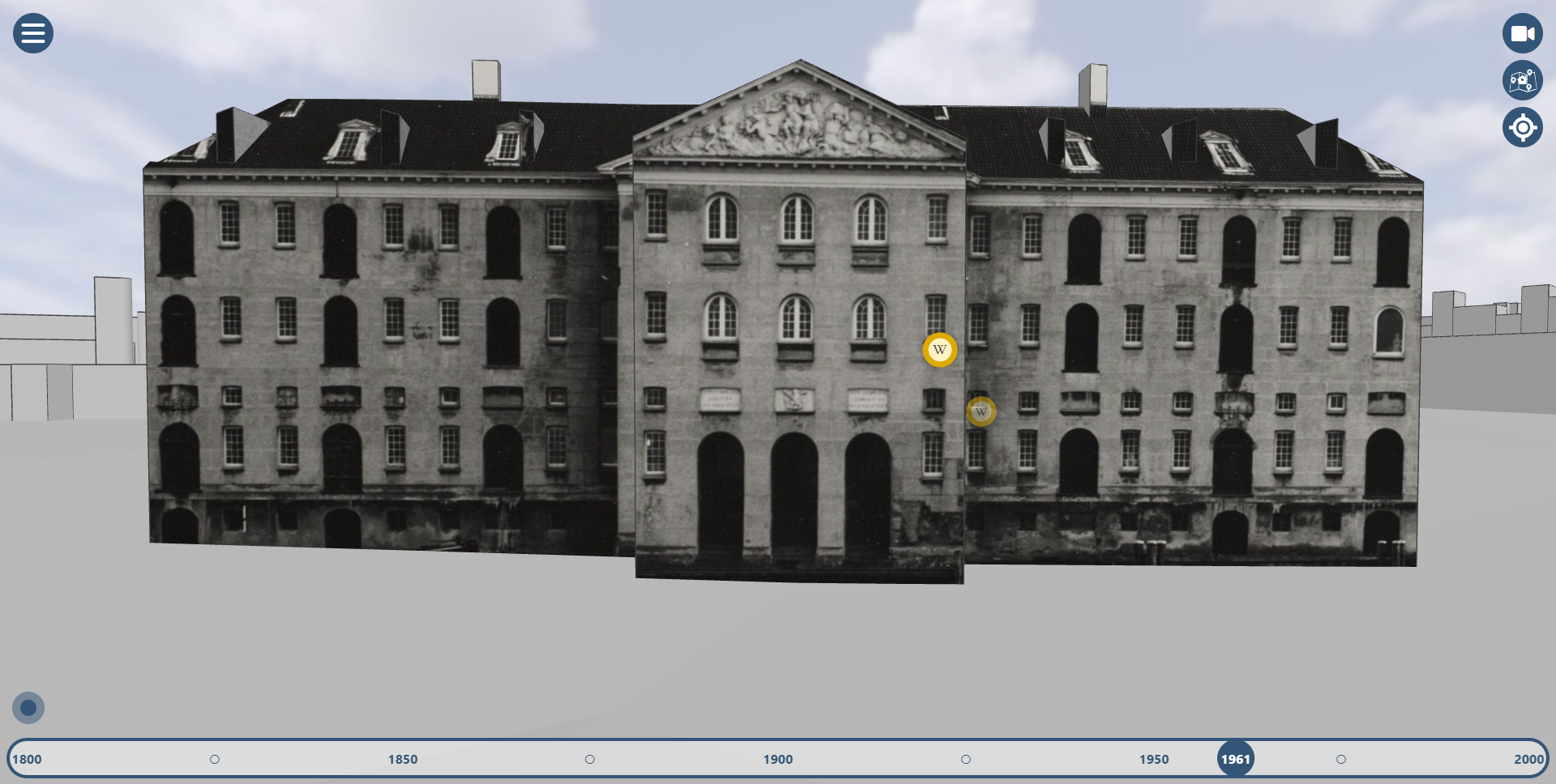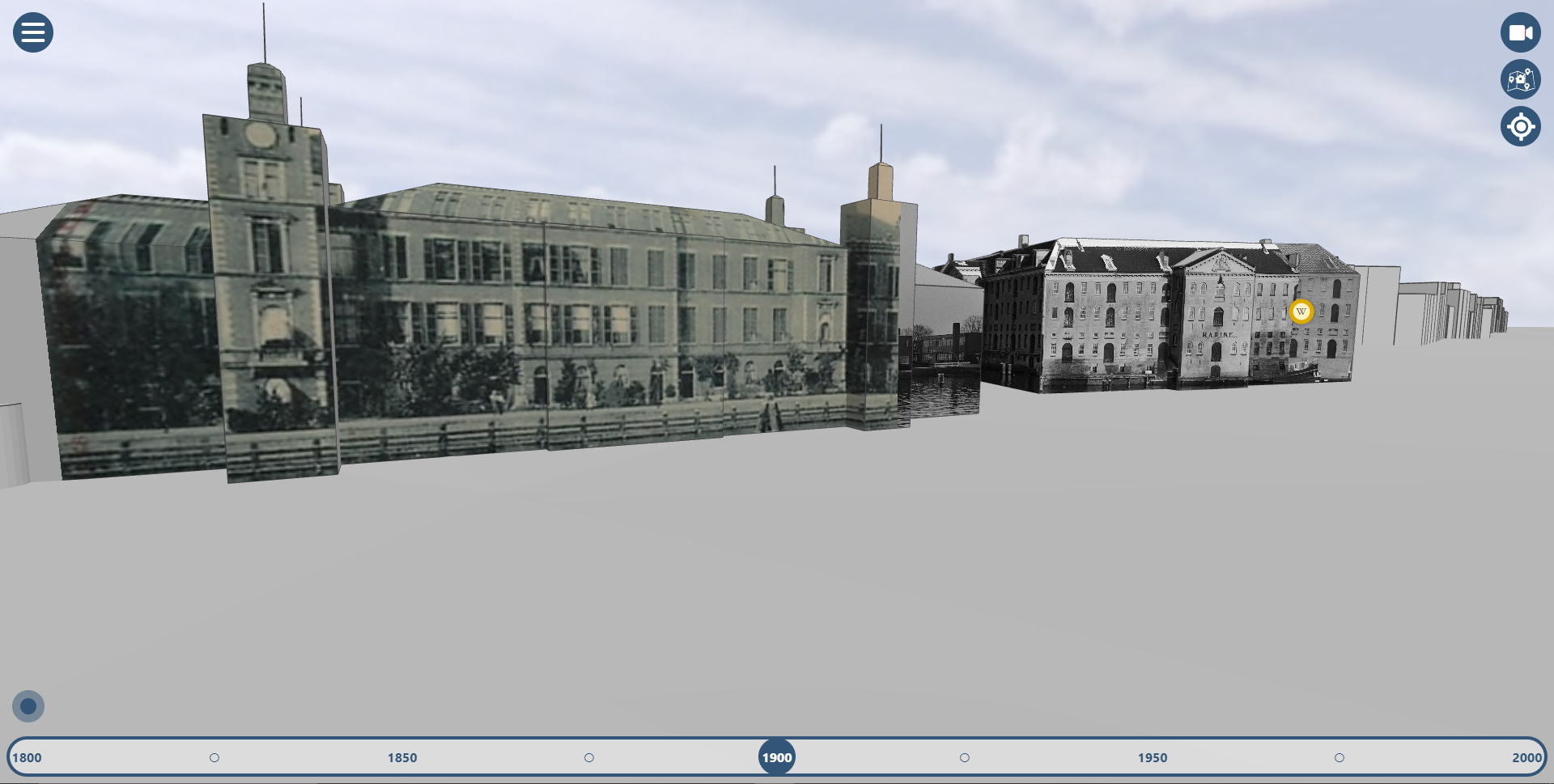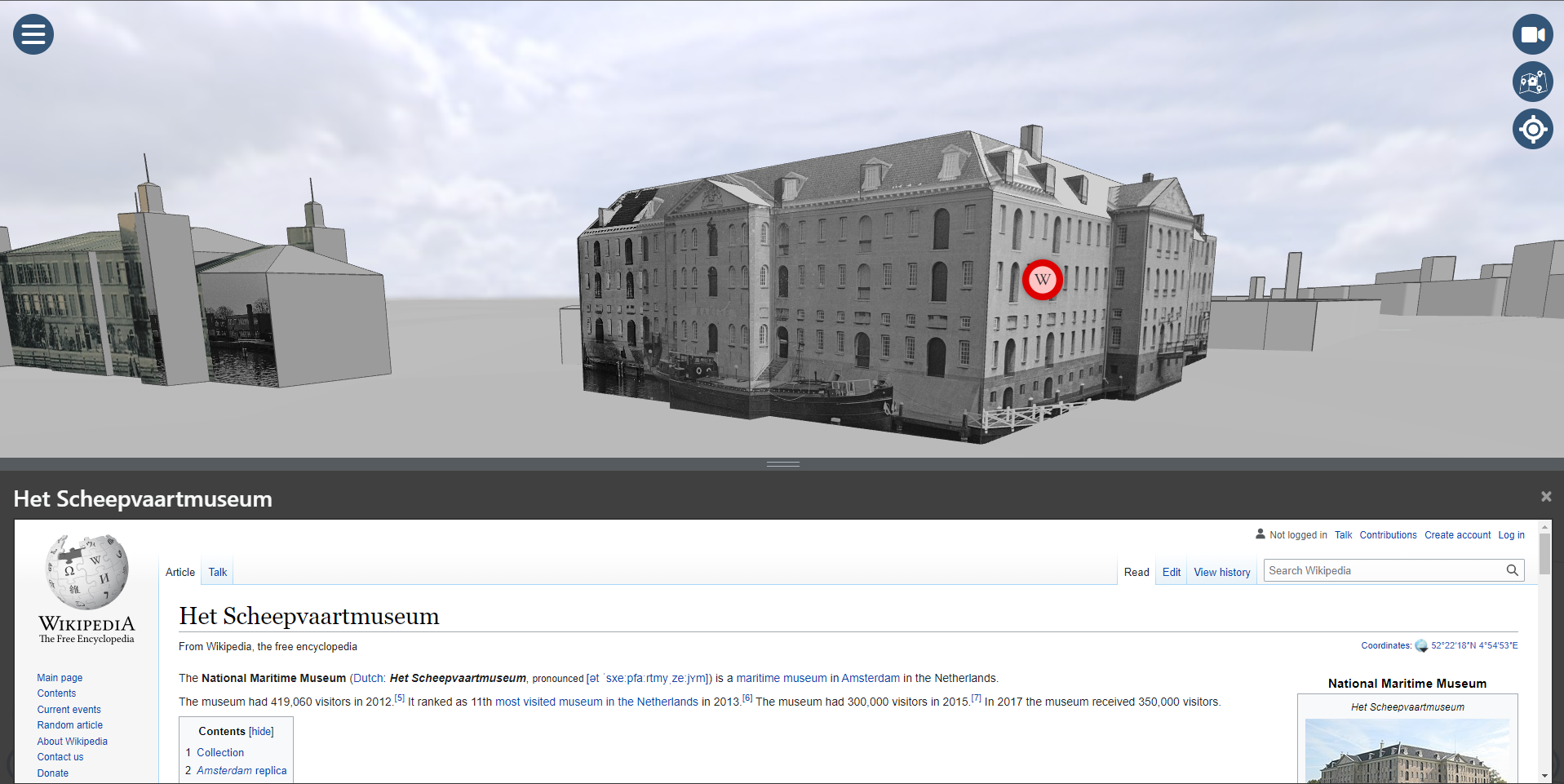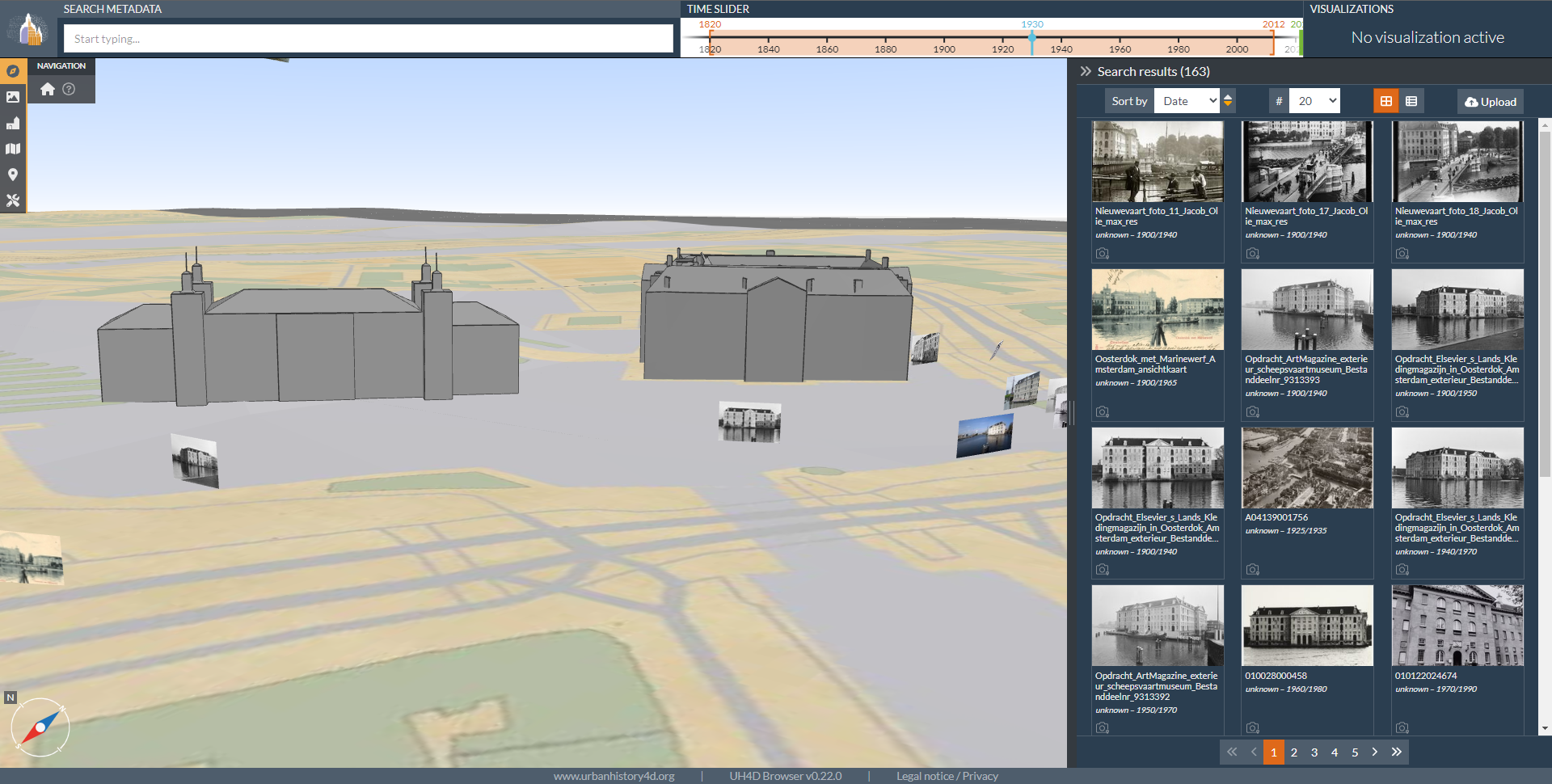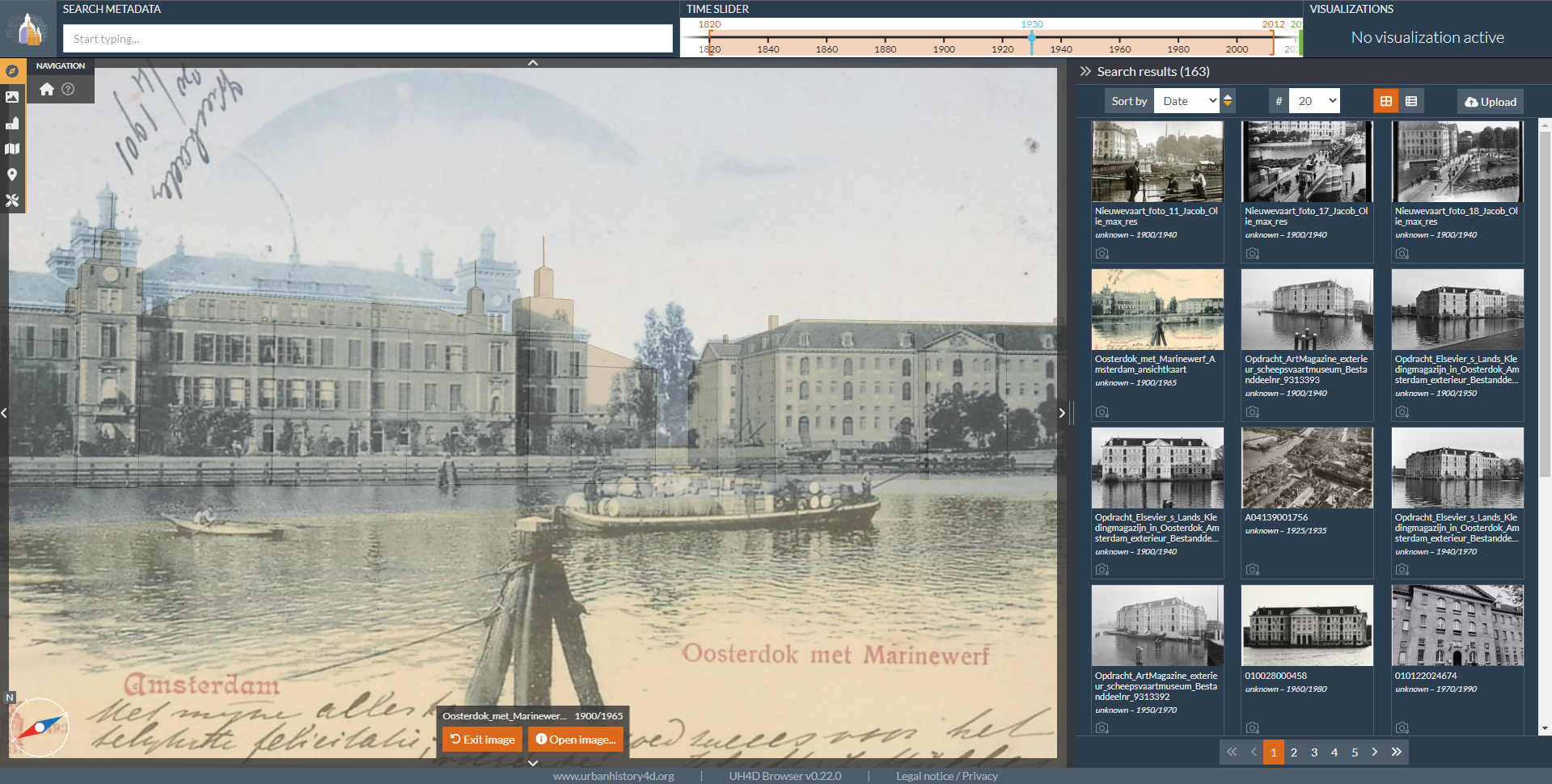The Time Machine network has since its founding a few years back grown continuously and today comprises more than 600 partners from over 40 countries. Leading academic and research organisations, cultural heritage institutions and private enterprises provide our network with the greatest expertise, technology and innovation Europe has to offer. They support our key science and technology challenges, provide cultural, historical and geographical material and expertise, and contribute to the development of Time Machine’s structure and services.
The Time Machine community as catalyst
Our Time Machine community has the potential to create effective synergies and propel individual projects carried out by our partners forward substantially. As can be witnessed by a pilot project carried out as a cooperation between the Amsterdam Time Machine and the Local Time Machine project UrbanHistory4D. This pilot project Living with water in Amsterdam can be considered as a proof of concept for our Time Machine initiative.
Julia Noordegraaf (Professor of Digital Heritage at the University of Amsterdam’s Department of Media Studies, coordinator of the Amsterdam Time Machine and Vice President of the Time Machine Organisation), Sander Münster (Junior professor for Digital Humanities [images/objects] at the Friedrich Schiller Universität Jena, coordinator of the LTM project UrbanHistory4D and Secretary of the Time Machine Organisation), Daan Groot (Student in the Master Urban and Architectural History, University of Amsterdam and student assistant at UvA-CREATE for the Amsterdam Time Machine Project) and Ferdinand Maiwald (Research Associate for Geodetics and Photogrammetry at the Friedrich-Schiller-Universität Jena) sat down in this interview to share how this cooperation came into being and how it serves as proof of concept for Time Machine.
Interview
Pilot project: Living with Water in Amsterdam
The vast majority of Dutch towns sprang up from a river between the tenth and sixteenth centuries. Amsterdam, for example, was founded on the Amstel and the IJ. These waterways, together with the seventeenth-century canal ring, form the main structure of the old town. The spatial development of the city has been influenced for centuries by its relationship with water. Both the current and future use of water in the city cannot, therefore, be separated from its past. This topic is central to the summer exhibition of the Architecture Center Amsterdam (ARCAM), ‘Liquid building block – Designing with water in Amsterdam’, which opens on 8 July. As part of this exhibition, for example, it is explained how the water system in Amsterdam works and what current water issues are. The Amsterdam Time Machine provides historical input for this exhibition. They are collaborating with Wietse Balster (Municipality of Amsterdam) and the Universities of Jena and Dresden to create a thematic, historical ‘water’ version of 3D.Amsterdam.
For further information, see the (English) blog post by Daan Groot. You can also try out the 4D browser application yourself by clicking the button ‘4D Browser’ below.
